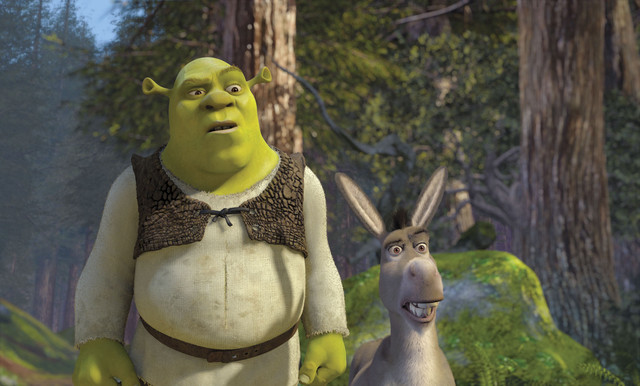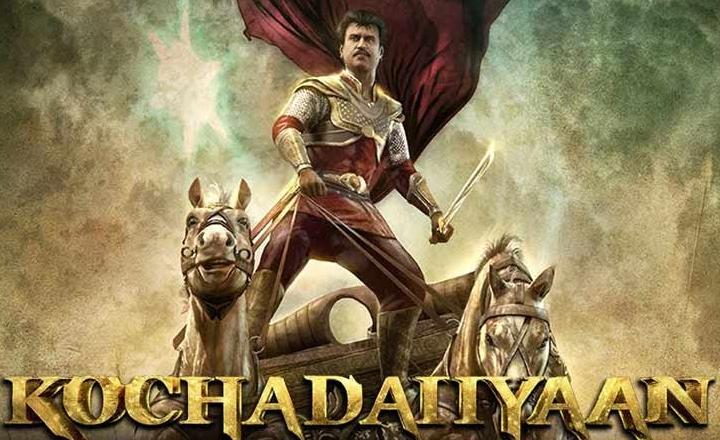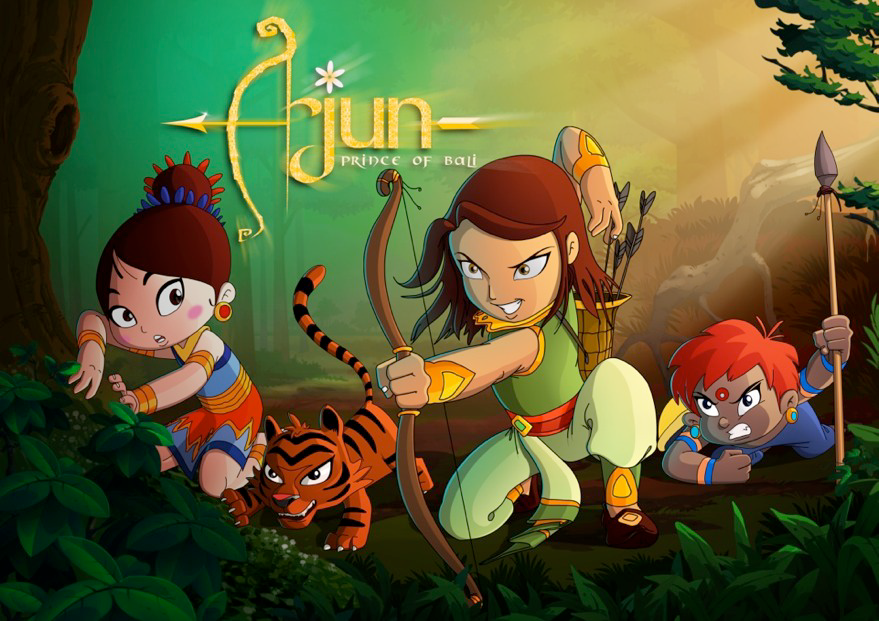The year 2014 will go down in Indian animation history as a path-breaking year, riding on not just the success of the 3D animation feature film ‘Chaar Sahibzaade’, which has gone onto become the highest grossing Indian animation flick of all time; but also with the Indian broadcasters being more open to carrying a lot more ‘domestic’ content on their respective channels.
The year also saw the AVCGI getting a boost with then Finance Minister Arun Jaitley acknowledging the Film & Television Institute (FTII), Pune and Satyajit Ray Film & Television Institute, Kolkata to be accorded status of Institutes of national importance and a National Centre for Excellence in Animation, Gaming and Special effects to be soon set up in the coming year.
These were just a few developments that took place in the year gone by. AnimationXpress.com turns around the hour glass one last time to take you through the other big developments of the year in a quick Flashback, so read on…
Movers N’ Shakers of the year
The biggest headliner for the year was DreamWorks Animation, as there were rumors doing rounds that chief honcho Jeffrey Katzenberg was looking for some serious funding to bolster the company’s completely different approach of going digital for the year, considering the opportunities galore in the horizon.

What ensued next were acquisition and merger talks with SoftBank and Hasbro respectively. SoftBank offered to acquire the toon conglomerate at $32 per share, which would have resulted in the studio being acquired for nearly $3.4 billion (having a market value of only $1.9 billion), but as fate would have it the deal didn’t go through as DreamWorks felt it deserved much more.
Next in line was Hasbro, the toy making giant, which made an offer of $2.56 billion but couldn’t close the deal due to similar reluctance from the studio. The animation studio later made headlines locally by inking a strategic deal with Infosys for harnessing the tech giant’s engineering services for better and faster delivery of projects.
And recently, DreamWorks made another major announcement of launching a television channel in 19 Asian countries in the second half of 2015. The new channel is an extension to its expanding TV production and distribution initiatives. It will leverage over 2,000 hours of existing DreamWorks TV content in addition to 1,200 half hours of original animation that is currently in production.
Closer home, DQ Entertainment also had some good news coming its way. The company recently managed to raise funds up to $ 50 million (Rs 300 crore) through issue of senior secured convertible bonds to OCP Asia’s (Hong Kong) private credit fund OL Master, and these funds will be used for developing more than 20 IPs and co-production projects that are lined up for the next two years, for repaying debts of close to $ 7.21 million (Rs 44.51 crore) and for general working capital purposes.
The current projects under development include Robin Hood, Peter Pan season 2, Lassie, Miles from Tomorrow Land and Popples & Seven Dwarfs & Me. The new projects that will be funded include 5 & IT, Yonagunis and Leo Galilei and a recently signed deal with Rai in Italy called Pio the Chick that will commence production soon apart from the content acquisition deal they inked with Ciwen Media Group for Greater China.
Other winners for the year included the Trivandrum based Toonz Animation, which acquired the Spanish Imira Entertainment. The far-reaching agreement will see Imira continue to operate as a separate production and distribution entity with its existing management structure, but the companies will jointly exploit the opportunities and synergies created by the acquisition to offer combined content creation strength and global distribution.
According to the agreement, Imira will handle television and licensing rights for Toonz Animation-produced content in regions where it has an established foothold including Europe, US, Latin America and Africa with Toonz utilising its relationships in Asia and Pacific territories on behalf of Imira. Now that’s called collaborating and ‘glocalising’.
Theatricals
The real show stealer for the year was the 3D animation feature film ‘Chaar Sahibzaade’ from the stable of renowned Hindi film industry director/producer Harry Baweja. It is the first photo realistic 3D animated film on Sikh history and is based on the real story of the sacrifices of the four sons of Guru Gobind Singh – Baba Ajit Singh, Baba Jujhar Singh, Baba Zorawar Singh and Baba Fateh Singh. Produced by Pammi Baweja and directed by Harry Baweja; it released on 6 November in Punjabi, Hindi and UK English, and has received an overwhelming response from the audience across the globe. The movie has been praised for its emotional and unbiased portrayal of one of the most important chapters of Sikh history.
WATCH THE EXCLUSIVE INTERVIEW OF THE MAKING OF ‘CHAAR SAHIBZAADE’ BY ANIMATIONXPRESS.COM
The Punjabi version of the movie alone has become the highest grossing Indian animation film ever, the distinction which was earlier held by Hanuman released in 2005 after grossing around Rs 5.25 crore in net collections. The movie has collected well over Rs 50 crore domestically and was made at a budget of just over Rs 8 crore. The studio that worked on the film is Mumbai based i.Realities under the supervision of Prasad Ajgaonkar.
Also released in 2014 was Green Gold Animation’s third theatrical outing with Mighty Raju: Rio Calling. Green Gold Animation’s first theatrical release Chhota Bheem (2012) was made at a budget of Rs 4 crore and recovered Rs 3.3 crore; whereas the second feature Chhota Bheem and The Throne of Bali (2013) raked in only Rs 4.3 crore from its nearly Rs 8 crore investment. The third movie was made at a budget of nearly Rs 4 crore but it couldn’t really recover the investments with collections of only about Rs 2.5 crore. But that hasn’t deterred Rajiv Chilaka’s confidence in his work and his team, as the studio is already working on its fourth theatrical release ‘The Himalayan Adventure of Chhota Bheem’ for the summer of 2015.
The other highlight of the year was the release of Goopi Gawaiya Bagha Bajaiya directed by Shilpa Ranade and produced by Children’s Film Society India. It revolves around two blundering yet lovable musician protagonists who obtain four boons, while crossing paths with a powerful ghost. Then what follows is, they avert wars, marry princesses and help the common people live happily ever after. The characters in question – Goopi and Bagha – were created by globally acclaimed director Satyajit Ray’s grandfather Upendrakishore Roychowdhury. The film is inspired from Goopy Gyne Bagha Byne the first film from the Goopy Gyne Bagha Byne trilogy.
The film was mixed in 7.1 surround sound and premiered at the Toronto International Film Festival, Busan Korea, MAMI India and was also showcased at DIFF Dubai and NYICFF New York among several other film festivals. Paperboat Animation Studio is the hardworking team behind this beautiful movie. The style of animation used is a mix of puppet and cut-out animation style.
Though the latter didn’t get much screen visibility across the nation, it certainly deserves a mention for its attempt at doing something outlandish for an Indian animation feature film.

And just like 2013 had the debacle of ‘Mahabharat’ for Indian animation, ‘Kochadaiiyaan’ proved to be another chink in the armor for the industry. Well, we can always make excuses that the budgets hamper creativity and there is not enough screens in the country to support and promote animation films as against live action and the audience is yet to accept animation as a powerful genre for film viewing. But, to be honest it had much to do with the low quality of animation that people ended up watching on-screen.
Globally too it was a great year for animation, among the top releases there was: Big Hero 6, The Lego Movie, Penguins of Madagascar, How to train your Dragon 2, The Boxtrolls, Rio 2, Ribbit, Song of the Sea, Yellowbird and Mr. Peabody & Sherman among many others.
Creativity over outsourcing
Like many other industries, animation in India earns most of its revenues through outsourced projects from American and European studios. While that is good news from a business standpoint, the increasing number of outsourced projects also means that the animators are constantly working under strict deadlines and their project work is always under remote supervision which hardly leaves any room for creative decision-making. Such an environment not only tramples upon creativity but also leaves little time to pursue one’s creative aspirations.
The business model hasn’t really evolved much in the past year though a lot of efforts have been made to create a lot more ‘local content’ and to state a few examples, Green Gold Animation – that is one of the studios in the country that has stuck to its guns and created only original IPs – collaborated with Disney Channel India to bring the character of ‘Arjun – Prince of Bali’ to life in a 2D animation series on the channel this year; even one of the pioneers in the animation space ventured into unchartered territories with its first 2D animation production with ‘Kisna’ that is telecast on Discovery Kids.

There is also news that a few general entertainment channels (GECs) are exploring to use animation content as a block on their fixed point charts in the coming year. One such studio that has managed to make inroads into that space is HopMotion Animation based in Mumbai that has clinched a deal with a leading GEC.
What was also encouraging to see during the year was India signing treaties with Canada and Poland for co-producing and sharing a lot more ideas on how to take learnings from one another to create a lot more quality content. It is a known fact that we are not very capable when it comes to pre-production of new content, but once we have things in place we can really churn out content given our strong technical capabilities; so this will go a long way in helping us evolve into better creators than just being executors.
Learnings from the West for the East
Hollywood’s animation community has entered its post-Pixar era, creating fresh opportunities for everybody else, including the animation community in India. Pixar is no longer the scruffy, fun-loving studio it was a generation ago, back in 1995 when ‘Toy Story’ was released. Pixar is now wholly owned by the marketing behemoth, Walt Disney Company, which has not seriously been in the movie business since the days of The Lion King and Little Mermaid.
Meanwhile, DreamWorks has changed its business model away from feature animation and has signed a deal with Netflix, to produce 300 hours of original programming. DreamWorks’ CEO, Jeffrey Katzenberg spends as much time in Shanghai nowadays as he does in his Hollywood offices, building a new DreamWorks theme park there and doing co-productions with China’s deep purse strings government.
The point is that the Walt Disney Hollywood most of us thought we knew is no longer there. It moved on while we were not looking, that is precisely why this is a time of opportunity for everybody else, including animators in India. So 2015 will really be the year of opportunities for Indian animation studios and it’s time for everyone to wake up and smell the coffee!

